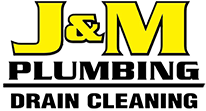Your kitchen sink is one of the most commonly used plumbing fixtures in your home. Between washing dishes, draining pasta, and dumping food down your garbage disposal, your kitchen sink goes through a lot during the day. While you might think a quick scrub with dish soap and a sponge cleans your kitchen sink, this is far from the truth. Leftover food particles, standing water, and other germs are leaving your sink to be one of the most germ-infested areas of your home. Lucky for you, we’re sharing our top tips on how to disinfect your kitchen sink the right way.
Why Does My Kitchen Smell Like Rotten Eggs?
In your bathroom or kitchen sink, if you smell like rotten eggs, you may be dealing with hydrogen sulfide. Hydrogen sulfide is a gas created by unwanted bacteria that produces a sulfuric smell. This gas is colorless, flammable, and dangerous. Natural sources include crude petroleum, natural gas, and hot springs, but it is also common in low-lying, poorly ventilated areas such as manholes, basements, and sewer vaults.
You might be experiencing rotten egg smells if your water or drain is contaminated. When sinks are clogged or partially drained, they drain slowly, causing bacteria in the p-trap to build up, creating hydrogen sulfide gas. It could also be that the drain is partially drained or clogged. In addition, if the sink hasn't been used lately, the p-trap dries up and gas comes out of the drain from the sewer line.
Keep on reading to find out how to get your kitchen sink sparkling clean and how J&M Plumbing & Drain Cleaning can help!
Step 1: Rinse and Sprinkle Baking Soda
Before you start scrub-a-dub-dubbing, make sure you clear out your sink of any dishes, leftover food particles, or other standing water that you want to wash down your drain. Give your sink a quick rinse with warm water and make sure it’s empty before you start cleaning. After you clear out your sink and rise it down, sprinkle baking soda generously all over the sink.
Step 2: Put Dish Soap on a Sponge and Start Scrubbing
Once your sink is covered, and yes, we mean covered, in baking soda, put a dime or nickel sized amount of liquid dish soap on a sponge and begin scrubbing. Don’t worry, the baking soda will not scratch your sink. The best way to scrub your sink is start at the top and scrub in circular motions down towards your drain.
Step 3: Sanitize with Vinegar
Once you’re done scrubbing down your sink, rinse down all of the soap and baking soda so that everything gets washed down the drain. Once it’s all washed away and your sink is empty, you’ll want to soak paper towels in white vinegar and cover your sink with the paper towels for about 20 minutes to naturally sanitize the sink.
Step 4: Clean your Faucets
Don’t forget about your faucets! Those definitely get dirty too, and with multiple sets of hands touching the kitchen faucet daily, you’ll definitely want to clean it. You can either use dish soap and sponge, similar to how you scrubbed your sink, or spray an all-purpose cleaner over the faucet and handle. Once you’ve cleaned the faucet, rinse it down with a paper-towel that’s been soaked in white vinegar.
Step 5: Clean Your Drain/Garbage Disposal
The last step to disinfecting your kitchen sink is making sure you clean out your drain and garbage disposal. If your kitchen sink is sparkling clean but you still smell something funky, it’s most likely coming from your drain. Food particles and other waste can get caught in your drain, so it’s important you aren’t skipping this step in your cleaning process. Sprinkle a little bit of baking soda down your garbage disposal or drain first and then pour some vinegar down. The combination of baking soda and vinegar will start to fizz up, so don’t be alarmed. The next thing you’ll want to do is rinse the solution with hot water, which will sanitize your drain or disposal.
Is it Safe to Pour Bleach Down Your Kitchen Sink?
Yes. Bleach interacts with substances in your pipes, releases toxic fumes when mixed with other household cleaners, clogs or damages pipes, and destroys the good bacteria in your septic system when it is poured down the drain.
We in the plumbing industry recommend that you follow these guidelines when handling bleach and similar cleaners:
- Stay away from the skin, eyes, mouth, and nose at all costs.
- To avoid splashing small amounts into your eyes and inhaling them, wear eye protection and masks.
- Put on rubber gloves to protect your hands.
- Whenever you are cleaning, wash your hands thoroughly.
What is the Best Cleaner for Stainless Steel?
Weiman Stainless Steel Cleaner and Polish is the best cleaner for stainless steel. It is a powerful cleaner and degreaser that will break down stains on your stainless steel appliances with ease. For a lighter clean, use acetone or glass cleaner.
If you’ve completed all of these steps and you’re still smelling something odd coming from your drains, this is where J&M Plumbing & Drain Cleaning comes in. We understand how frustrating a stinky sink can be, especially after you’ve just scrubbed down your entire sink, which is why we offer quality drain cleaning services. If you’re in need of a professional drain cleaning, schedule an appointment with us by calling us at (215) 987-4607 or filling out our online contact form.


